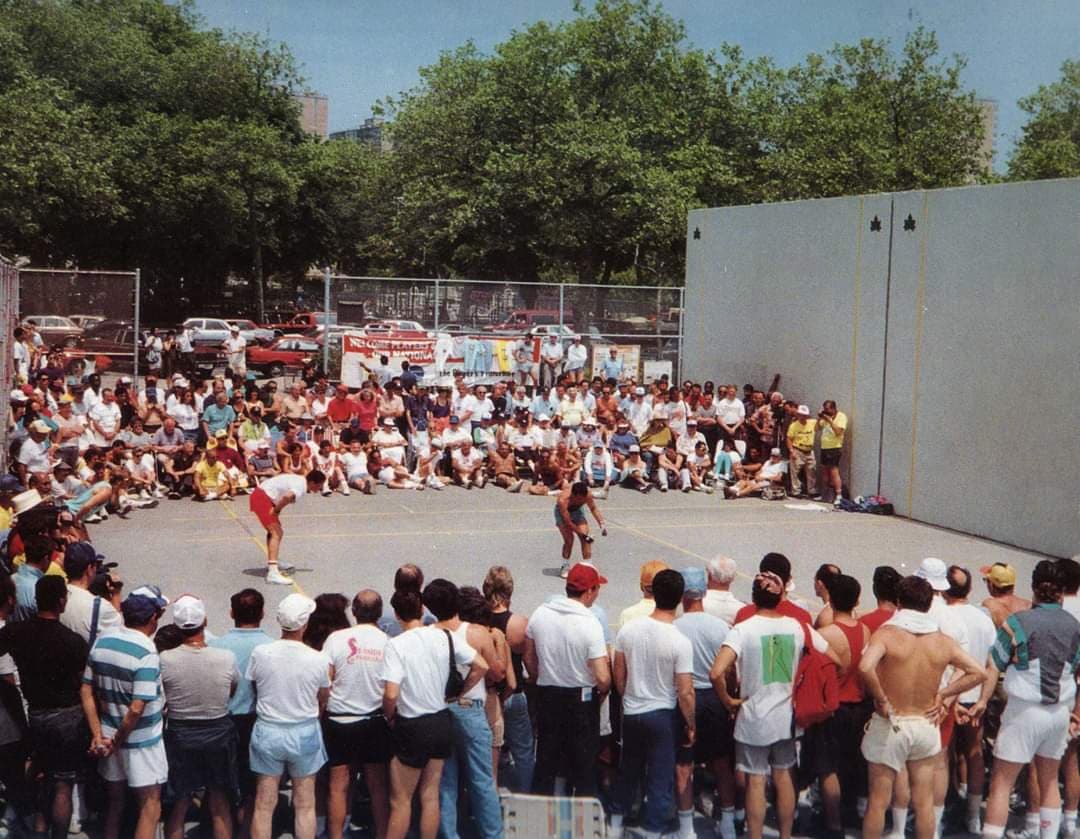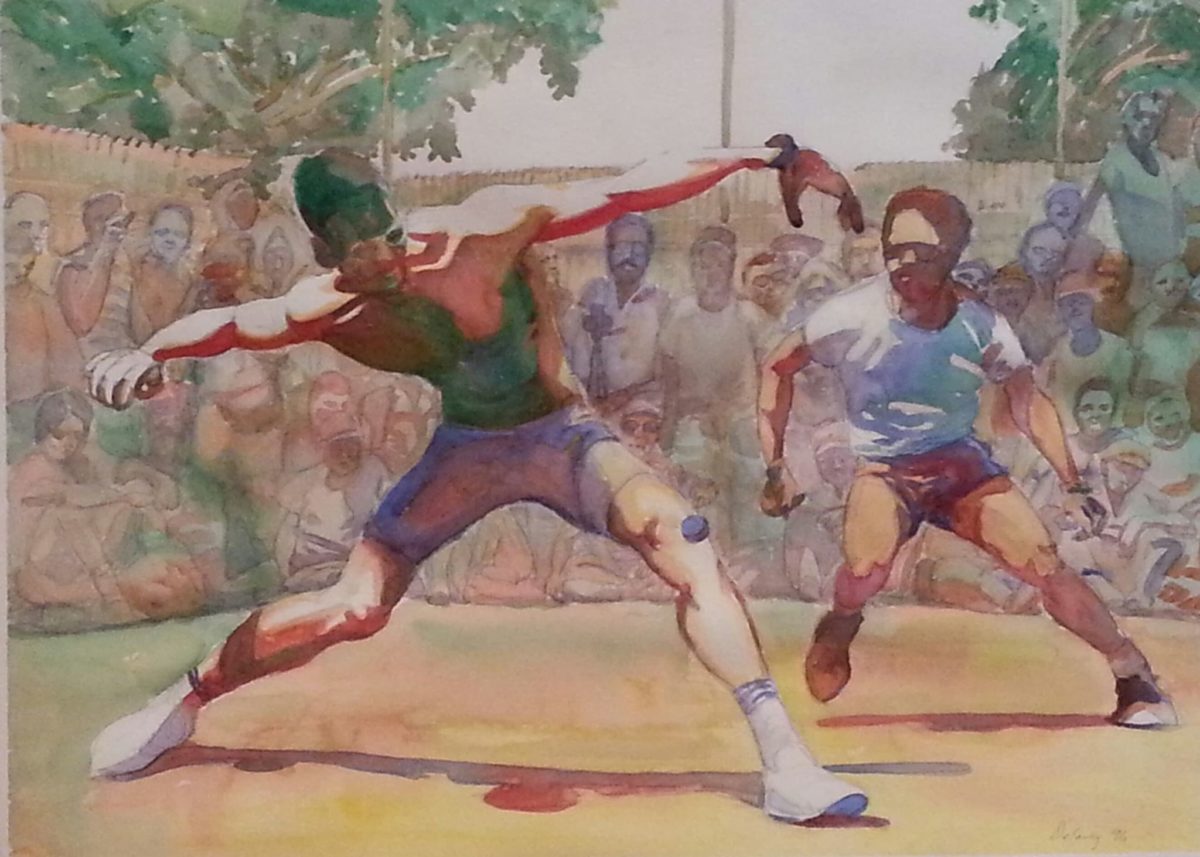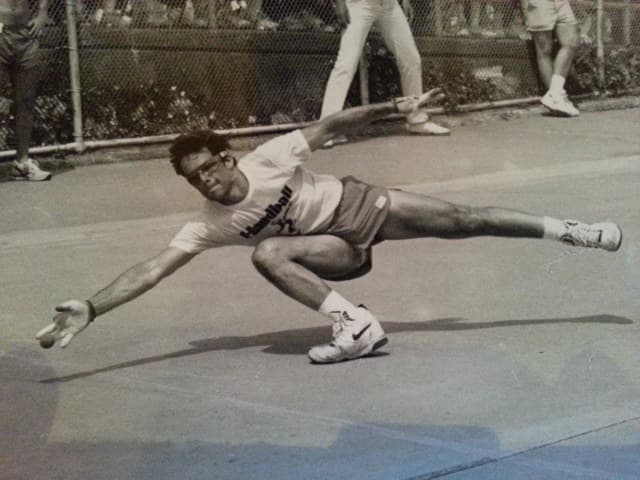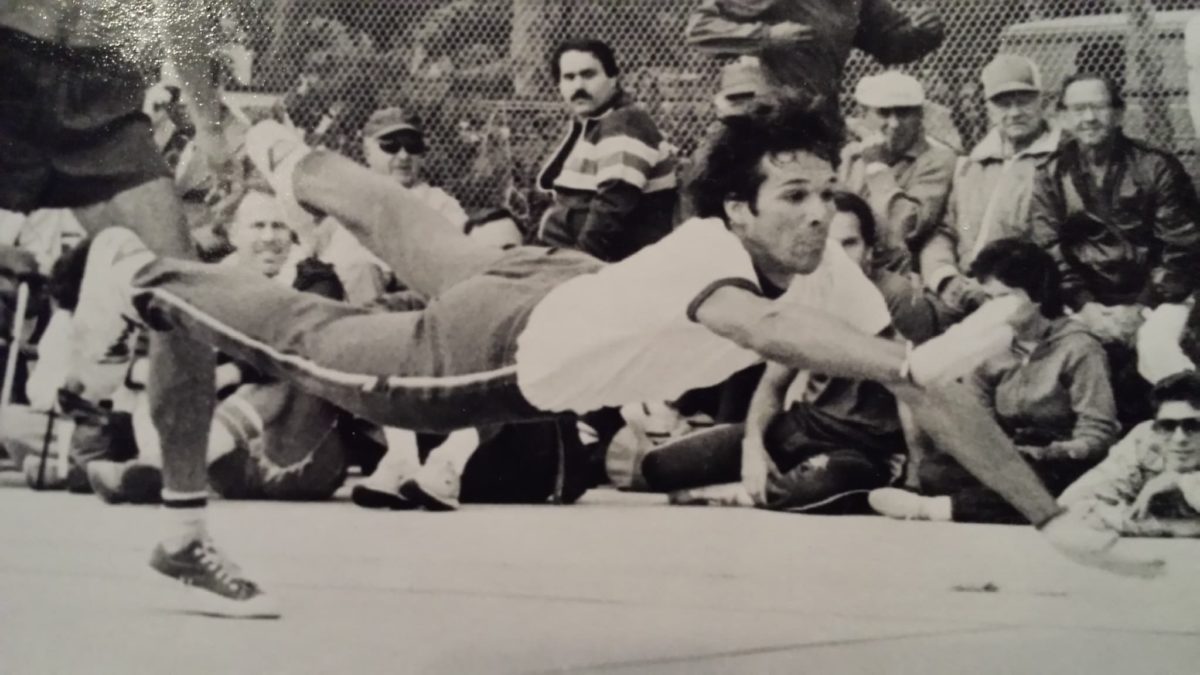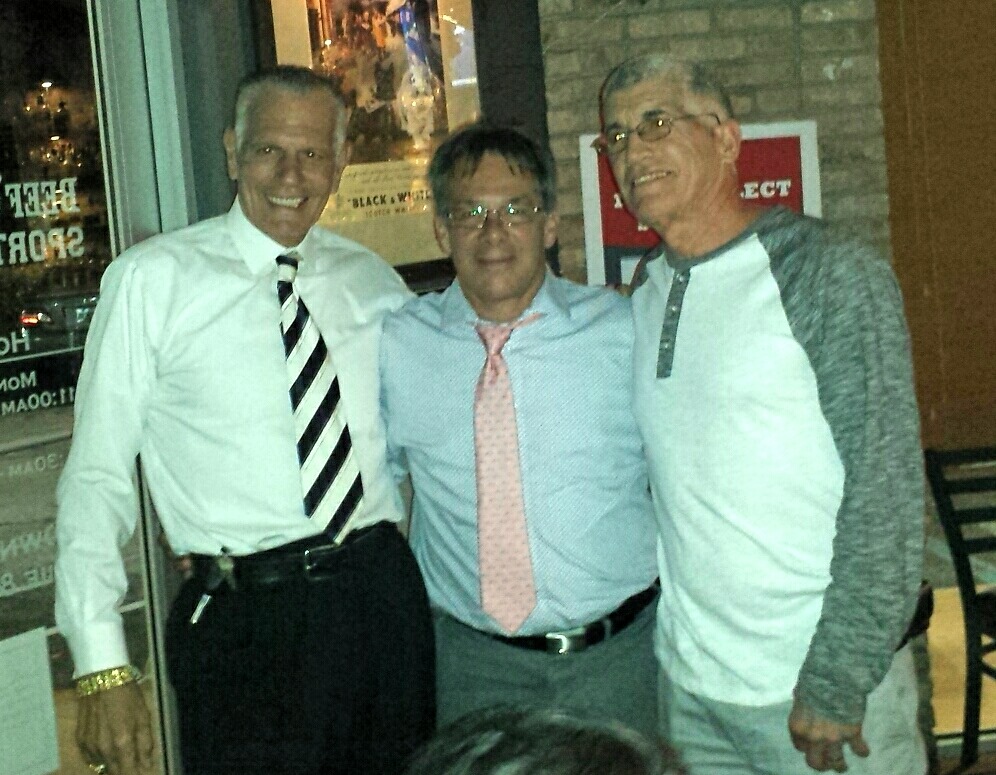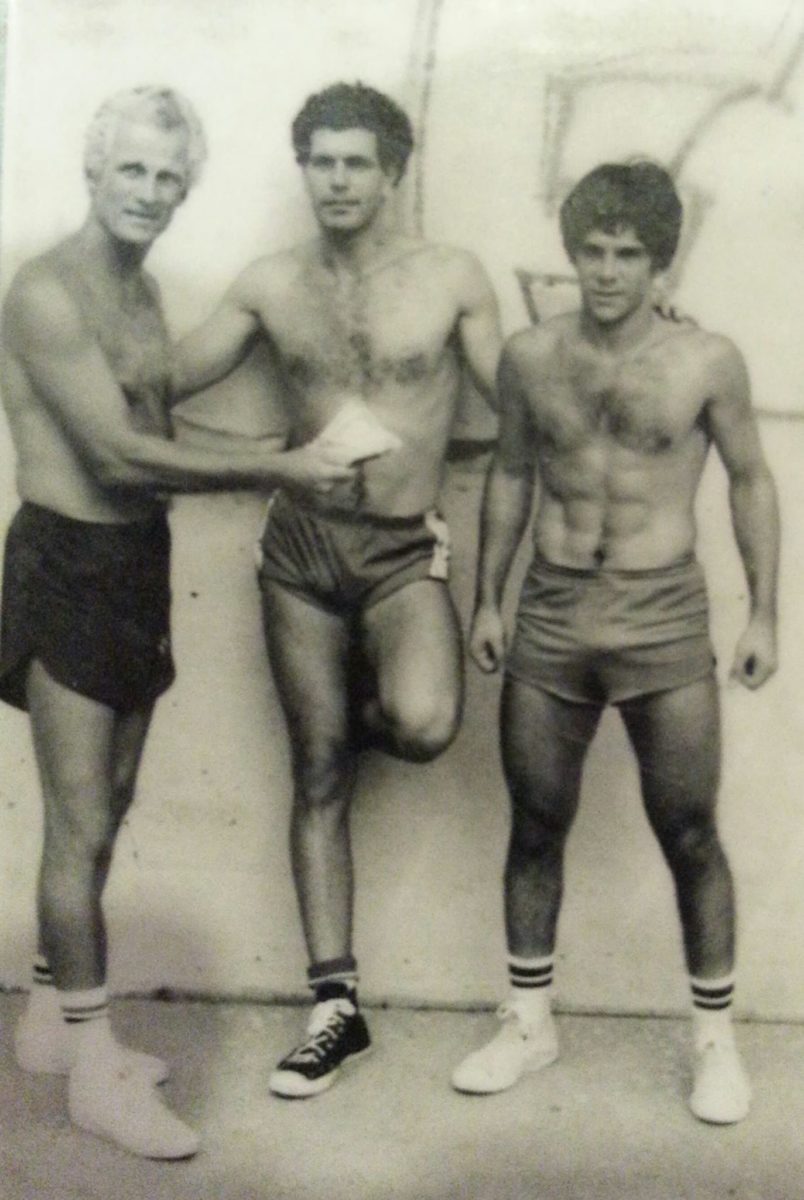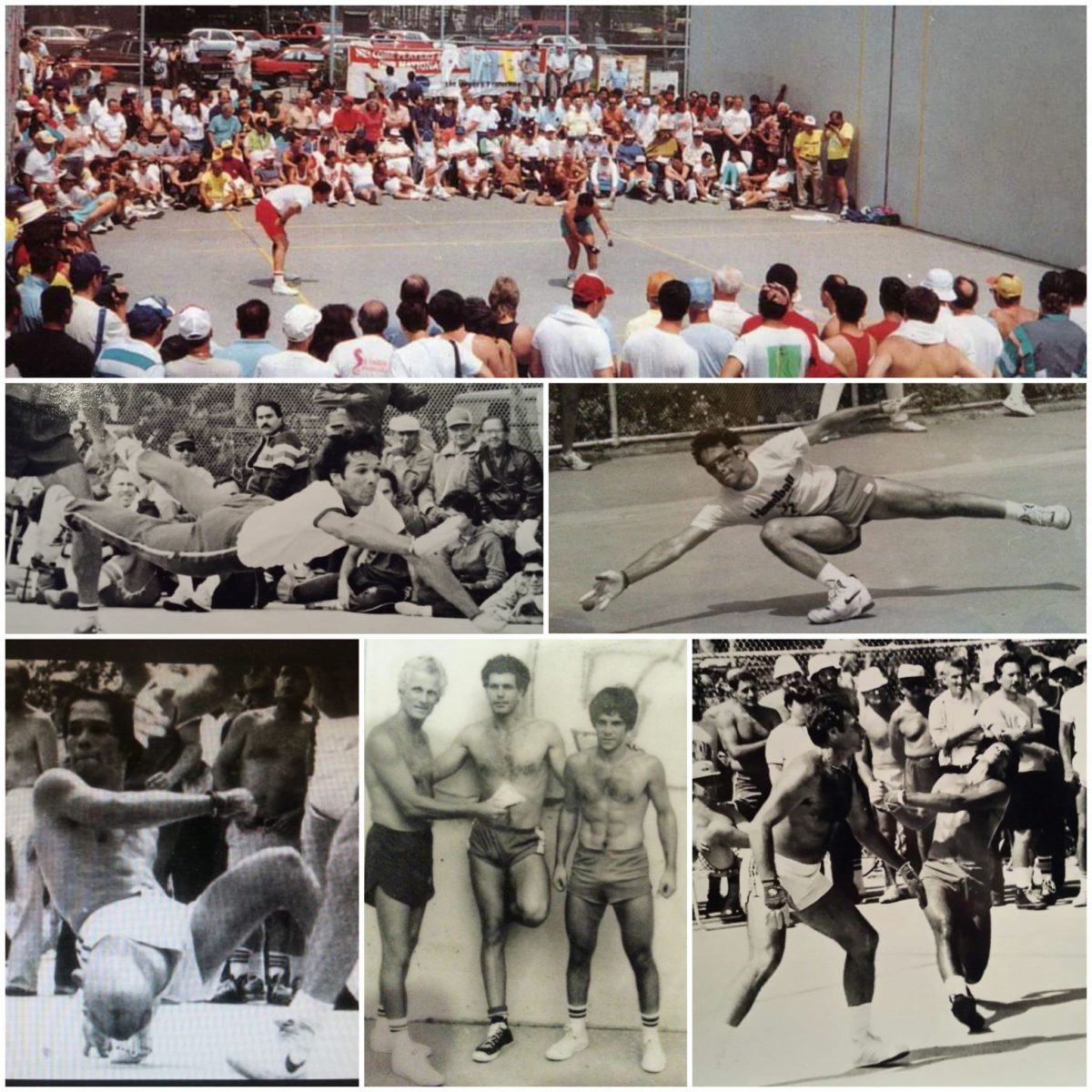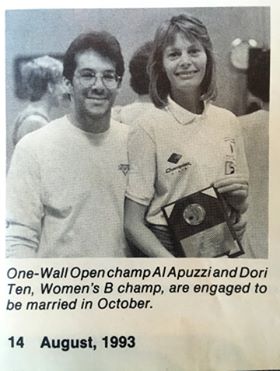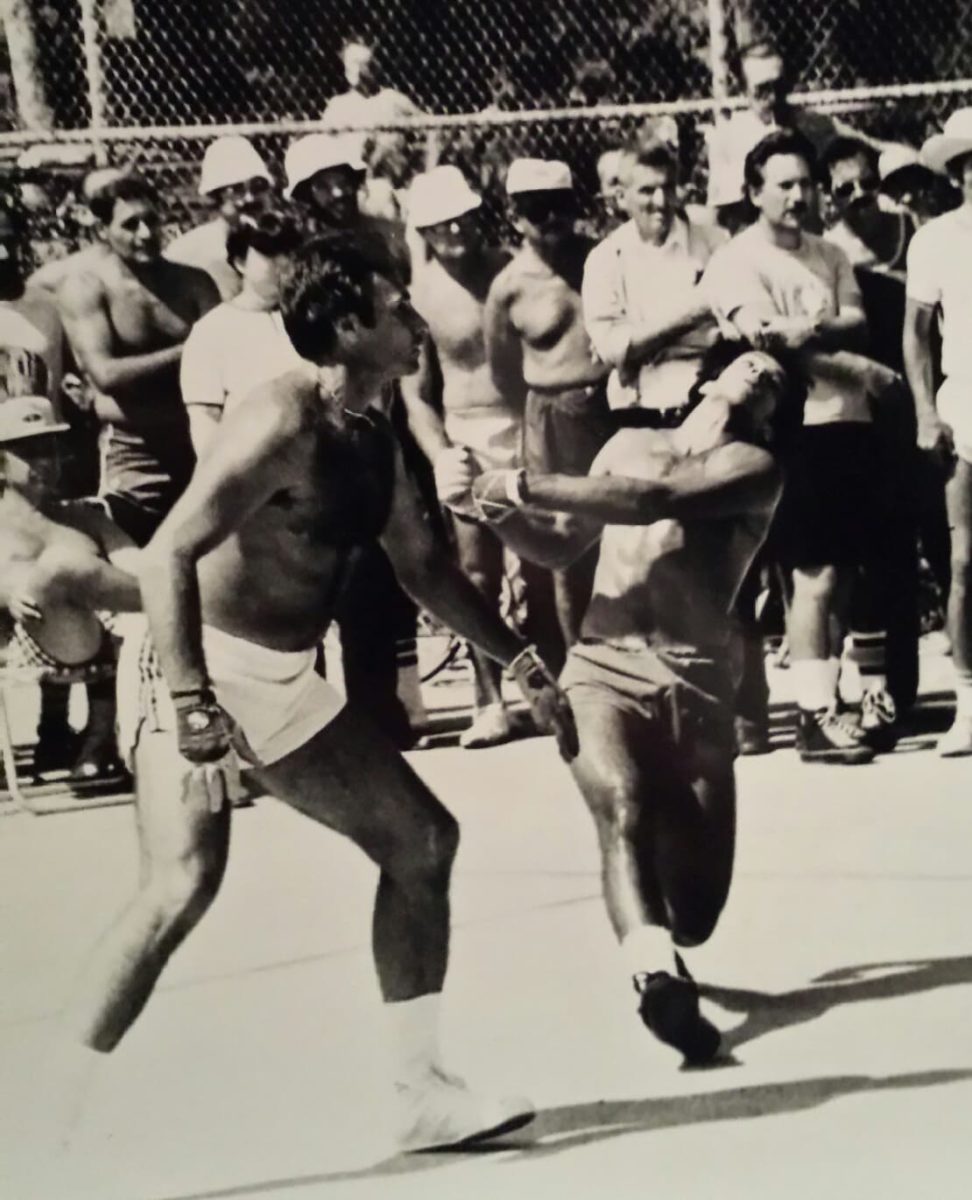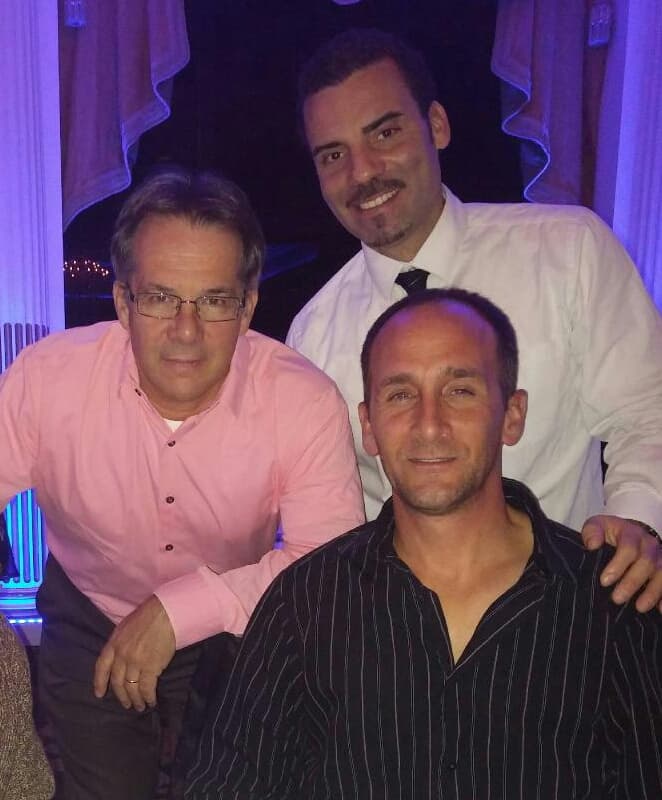1-Wall Ambassador Apuzzi Shoots Straight
WPH Press
Albert Apuzzi compiled a hall of fame 1-Wall career that featured 21 open national titles, placing just Oscar Obert and Joe Durso ahead of him with 22. Albert was drawn to handball at the age of four, playing “Ace, King, Queen” handball in school. Albert discovered “American” handball in 6th grade and started practicing on a makeshift court, in the schoolyard, or against a brick wall. In his teens, Albert was practicing 80 hours per week. Now 64, Albert has had a blood clot removed from his right arm and two hip surgeries but still continues to play and support the sport with the same passion he had for the game as a rising star.
In the WPH exclusive 1-Wall Ambassador Apuzzi Shoots Straight, Albert discusses his 60-year journey in handball, 1-Wall strategy, cross-training, his greatest influences, his memorable matches, who he admired and emulated, playing handball with his wife, what 1-Wall needs to do to become more mainstream, plays word association and more!
What was it that initially drew you to handball?
In NYC 1-wall handball is an EXTREMELY popular sport. Over 2,500 public courts & many are in schoolyards. I started recreationally at a local schoolyard and my family would spend the summers at a bungalow colony in Ellenville NY. Yes, they had wooden courts there too. We would play there too. One summer I met a girl who played paddle ball at the W. 5th St courts. She told me that W. 5th St was where the best players played & we had started dating, so I started meeting her there.
How many active 1-Wall players would you estimate there were when you were playing?
OMG!!! How can I even guess? Lin Fernandez, ex- PSAL Commissioner, once told me that the PSAL had 166 teams with over 5,000 school kids on the team rosters.
Was 1-Wall small ball or big ball bigger during your time?
Small ball but our big ball was the Spaldeen Pinkball [Spalding High-Bounce Pink Ball]. The pink ball was replaced by the big ball (racquetball). I personally would like to see the pink ball, or some version of it return. I’d like to see a big ball, (size of a racquetball) but heavier & pressurized handball.
Did you play both? Of course! Players started with the softer cheaper pink ball & “graduated” to the smaller black ball.
For those unfamiliar with the 1-Wall game, what makes a great 1-Waller?
Great serve, power, kills, and angles. It depends who your opponent is but especially in 1-wall the serve is generally the best skill to have. Strong serves earn immediate points and weak returns.
How often did you play handball when you were on your way up and when you reached the top?
Coming up I played about 80, yes 80, hours a week. We played an hour during gym class. Got out at 1pm & headed to the courts. Came home ate dinner & went back to school to play indoors at Canarsie High School. I lived just three short blocks away so I was there EVERY night. Then I would play at W. 5th St on weekends. Looking back, maybe with less playing I wouldn’t have wound up with a blood clot in my right arm.
Besides playing matches, how did you practice to improve your game?
I always cross trained. Never in the gym. Cycled around 250 miles weekly, Played a lot of park games. Many of them handicap games (ex. with just my opposite hand, spotting points, lob serves, hands to paddle, etc.). Before I started driving I had two choices, take public transportation or cycle. Since cycling was faster, less expensive and healthier I chose it. I stuck with cycling to this day.
Who was your coach/greatest influence? What was the most important lesson he/she taught you?
Never had a real coach. I would play locally against Neal Bocian (as a 15 year old the game was his opposite to my two hands) & Bruce Davidoff. At W. 5th St. I got to watch & play against Ruby Obert, Steve Sandler, Mark Levine, Dan Flickstein, etc. etc.. Ruby absolutely tortured me. His favorite line was “if I could run like him I’d be at Aqueduct (the racetrack). As I improved I started progressively getting into better & better games.
I had heard that Stevie had an awesome serve and opposite hand and that Ruby was the only one who could volley with him. I watched, absorbed, and practiced the skills and strategies during games. Durso and I were sparring partners. I was always practicing certain shots and strategies during a game. Even if it was obvious the goal was burning the skill into muscle memory. Sandler wasn’t a hard hitter. I figured that if I could copy his skills and add power that would be a better combination. Later on, I learned that Sandler was intentionally, or maybe I should say naturally, doing things on purpose that other players only did accidentally. Stevie had pinpoint accuracy and a knack for making his serve, which looked like it would be short, consistently floating over the short line.
From the time you first started playing, how many years did it take to become a contender in the biggest tournaments?
I started playing small ball as a high school senior at 15 years old. I won my first Nationals rather late at 28 years old. Needing only six elective credits for a teaching degree the job market collapsed. At 20 I entered Pharmacy School and graduated 5 years later. Then I had to pass the boards. I guess school and a career got in the way. Just a little hahaha
What do you consider to be the most important titles you won? I guess the first one you win is always special. Durso and I won our first doubles in 1983 by defeating Reyer and Ulbrich. My first singles was 1986 defeating Durso in the semis and Golden in the final.
Can you discuss your most memorable match?
My most memorable match was beating an idol Neal Bocian in the Nationals. As I mentioned previously, my first singles & doubles were memorable too. However, possibly more memorable was tying Ruby Obert’s record of 5 consecutive USHA doubles titles, breaking it & then making it seven by breaking my own record. Unfortunately, as my attempt for the eighth was approaching, I had to get surgery to remove a blood clot from my right axillary artery. I missed the Nationals and was told that it was a career ending injury. After laying of for a year I started trying to convert to a lefty. Eventually I very slowly returned to playing right handed but tried not to hit the ball hard. A BIG adjustment for me.
Who were the guys you admired when you first started playing?
Sandler, Bocian, Torres, Ruby & others who didn’t play at W. 5th St as frequently.
What was your most satisfying/important win?
Breaking the doubles records and of course beating Durso in the singles just because we played in the same park & he was so …… trying to find a nice word. . lol …. arrogant.
What was the strength of your game?
Physical conditioning and power. I was like the Duracell bunny. I could play all day long, day after day, at 100%. Durso once defaulted in a local event rather than play the final, after we both won our semis earlier that day.
Your wife, Dori Ten was also a top player. Did you practice together frequently? No. Good way to ruin a relationship.
Did you play doubles together? Only at a local park or when we go on vacation. She now understands that she needs to figure out whether she wants to play or win and in order to do so determine how much she wants to play or let me play.
Was it harder to watch her play than to watch your own matches? DEFINITELY
Did you coach one another during matches? Yes, but it’s tough because I have to limit my comments to her capabilities. I can’t tell her to serve a deep reverse.
Who were the best players of your era?
Durso: power & touch
Torres: hooking serves
Golden: tenacity & speed
Maroney: even handedness and good serves.
Of those great players, who was the most difficult match-up for you?
Torres because he is a lefty and hooks the ball a lot which the other guys didn’t do. I played Durso so regularly that we knew who should win before the tournament started.
What was your most disappointing loss?
Losing to Ed Golden in the 1985 final at the Castle Hill Beach Club. Short story is that late in the game with him serving I killed the ball from deep court. I walked to the short line and Golden to the long line. Then Mickey Blechman (the head ref) decided that the killer was no good. I wound up losing the game and match. Knowing that I was robbed I felt like quitting handball for good. The next day Morris Levitsky, who had called the short line and was Mickey’s friend, tried to make me feel better by saying that he knew the killer was no good but he didn’t call it. Complete BS and something I would never want anyone doing for me. That’s the way it was. Afterwards the appeal process was adopted to take some power from the head ref.
You are considered to be the greatest 1-Wall doubles player of all time. Did you have a regular doubles partner?
Durso in the beginning and later Golden, then Polanco and Castro. As I mentioned before our first doubles title and then breaking Ruby’s record and my sixth and seventh consecutive doubles are memorable. In 1989 and going to tie Ruby the annual Mermaid Parade passed by while the match was being played. Al’s supporters were cheering and banging their coolers. Durso and I were losing 11-4 in the tie-breaker. I wasn’t playing well. We regained the serve and I ran to 12-11. Then we closed the match out without Torres and Lonergan regaining serve. Boy, talking about getting the rug pulled out from under you.
How has the 1-Wall small ball game changed from your era to today?
It’s obviously less popular and the offensive skills are weaker. As a general statement the serves are weaker and you don’t see deep court offense. Off-hands are taken with a natural swing. Probably due in part to the ball being lighter.
Can you explain the “essence” or the legal block?
The “blocker” can stand still in front or aside the opponent(s).
Do you consider the essence to be a legitimate rule or an archaic one? Absolutely legitimate. Trying playing without it. It just wouldn’t work well. Try playing 3 or 4-Wall with it and it wouldn’t work well either. I know Sove and Driscoll don’t like it. Maybe they would if they were 1-wallers. Not moving, under those conditions is actually a safer way to play. It doesn’t seem to cause a problem for 1-wallers. If it’s not broke don’t fix it.
What can 1-Wall do to gain mainstream recognition in the U.S.?
The National organization is primarily a 4-Wall organization. 1-Wall is considered a local street game. The funny part is that even with the addition of glass walls, to give the viewing 1-Wall always had, 4-Wall is becoming less popular. Outdoor handball will survive and as we see in other countries, not stymied by 4-Wall handball, growing quickly. Sorry, but that is my honest opinion.
Word Association
Rookie Wright: slugger
Kendall Lewis: Good natural speed and power. Unorthodox swing.
Paul Williams: Gave his life to promoting the sport.
Joe Durso: Good blend of power & touch. Used too much touch & not enough power.
Satish Jagnandan: Nice serve & overall game but still lacks confidence.
Tyree Bastidas: Even handedness
Cesar Sala: Very talented but lacked dedication
Pee Wee Castro: Good work ethic. Played & competed hard
David Fink
WPH Senior Writer










